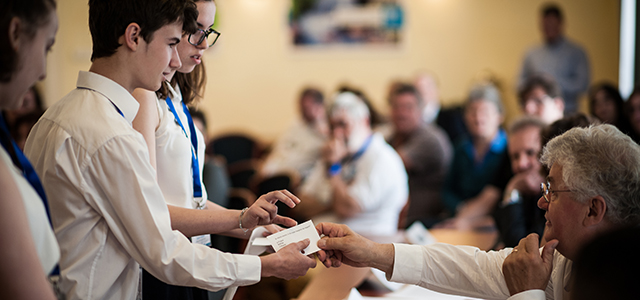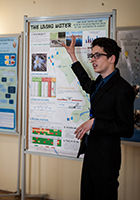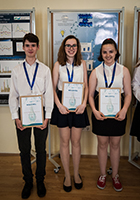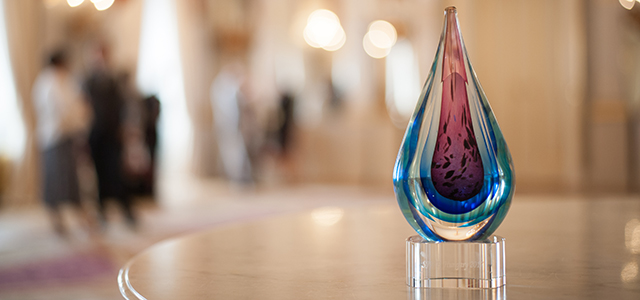Hungary has joined the Stockholm Junior Water Prize (SJWP) in 2013. National organizer of the SJWP is GWP Hungary Foundation in agreement with the Stockholm International Water Institute (SIWI). The patron of the Hungarian competition is H.E. János Áder President of the Republic.
The SJWP is open to young people between the age of 15 and 20, who have conducted water-related projects focusing on local, regional, national or global topics of environmental, scientific, social or technological importance. The Stockholm Junior Water Prize consists of two parts: the National Competition and the International Final. All participating countries start off arranging their own National Competition. The winner proceeds to the International Final held at the World Water Week in Stockholm.
For the 2017 Hungarian National Competition, 16 entries have been received. Altogether 32 secondary school students were involved, including individual contestants, two and three member teams as well. The projects were written in English, according to the requirements of the call and dealt with different topics, like water pollution, groundwater, wetlands, saving drinking water, public awareness raising, local issues and global challenges as well.

Jury chaired by Professor András Szöllősi-Nagy, President of UNESCO’s International Hydrological Programme, screened all projects using the same criteria as for the international final in Stockholm (Relevance, Creativity, Methodology, Subject Knowledge, Practical Skills, Report and Presentation). Other memb

ers of the jury are leading experts of the Hungarian water sector. The jury selected six entries for the national final held on 20 May 2017 in the premises of Hungarian Water Utility Association (MaVíz).
The finalists were requested to prepare a poster displaying the results of their project. During the final the contestants presented their main findings and answered to the jury's questions. Approximately 15 minutes time per team was allocated. Presentations and interviews were conducted in English.
 The winner is a team of three students of the Szent László Grammar School, Budapest – Anna Tari, Kristóf Stefán and Nikolett Szabó. Their project "Tanks of Water" deals with the water footprint and its reduction. The team created a board game to help people to learn about it and tested the game with students of two age groups. The players were able to give more thought to the ways in which their eating habits and lifestyles consume water. On the basis of the feedback of the players the game can be further developed.
The winner is a team of three students of the Szent László Grammar School, Budapest – Anna Tari, Kristóf Stefán and Nikolett Szabó. Their project "Tanks of Water" deals with the water footprint and its reduction. The team created a board game to help people to learn about it and tested the game with students of two age groups. The players were able to give more thought to the ways in which their eating habits and lifestyles consume water. On the basis of the feedback of the players the game can be further developed.
The second place goes to Bence Tóth, Miklós Zsigó and Bálint Szemerszki (Bánki Donát Politechnical School, Nyíregyháza) for their team work “Underwater cyclops – monitoring of reservoirs has never been easier”. The project describes how Remotely Operated Underwater Vehicles (ROV) can be used for monitoring and maintaining drinking water reservoirs of water utility companies saving large amount of water.
The third place was awarded to Ádám Fekete, Jázmin Németh and Viktória Rábai (also from the Szent László Grammar School, Budapest) for their project All Drains Lead to the Ocean. The objective of their project was to examine the effects of contraceptives on water ecosystem and to make people pay more attention to the usage of the pills and to find out how could the hormone levels in natural water be decreased
All finalists and the teachers supporting the teams received diplomas. The SJWP – Hungary 2017 Prize was later awarded to the winners by the President of Hungary in his office.

The winner team will represent Hungary in the international final that will take place during World Water Week end of August 2017 in Stockholm, Sweden.
The following financial and professional partners supported the Stockholm Junior Water Prize 2017 in Hungary: MaVíz, GE Water & Process Technologies, Budapest Waterworks, Xylem, Hungarian Energy and Public Utility Regulatory Authority, Grundfos, Ministry of Interior, Ministry of Human Resources, Hungarian Hydrological Society, Budapest Zoo, Budapest Spa, Danube Museum, National Geographic, and eisberg.
Photo credit: GWP Hungary
